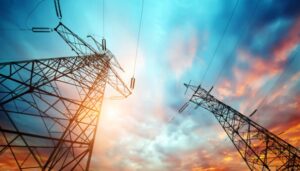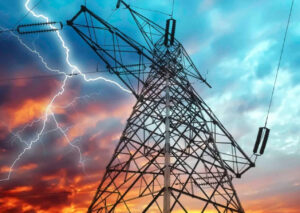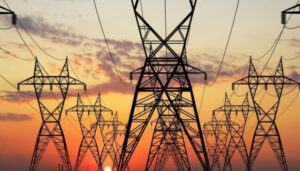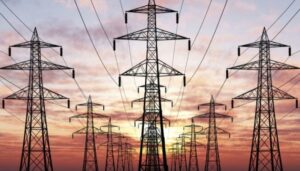
In June 2025, Ukraine exported 14.5% more electricity than it imported, which happened for the first time since October 2023, according to the Ukrainian energy and climate think tank DiXi Group, citing Energy Map.
“In June, electricity exports exceeded imports by 14.5%. This happened for the first time since 2023: the last time sales exceeded purchases was in October of the year before last,” DiXi Group said in a Facebook post.
A total of 233.4 thousand MWh were exported in June, which is 2.6 times higher than in May.
More than half of exports went to Hungary – 52.4% or 122.3 thousand MWh.
Another 16.6% (38.7 thousand MWh) went to Romania, 15.9% (37.2 thousand MWh) to Slovakia, 14.7% (34.2 thousand MWh) to Moldova, and 0.4% (0.9 thousand MWh) to Poland.
Exports were carried out daily, gradually reaching a peak on June 27 – 15.8 thousand MWh per day.
DiXi Group experts note that it was on that day that supplies to Poland resumed after a break of more than three months.
Imports increased by 5% compared to May, reaching 203.9 thousand MWh, of which 43% (87.7 thousand MWh) came from Hungary, 24% (48.8 thousand MWh) came from Slovakia, 14.7% (30,000 MWh) from Poland, 12.4% (25,300 MWh) from Romania, and 5.9% (12,000 MWh) from Moldova.
“With imports compared to exports, everything was the opposite: from high figures, the largest of which, 13.7 thousand MWh, fell on June 9, they moved to lower ones. On June 16, the lowest amount was purchased, namely 1.5 thousand MWh. Supplies fell by 6-25% from all countries except Slovakia and Hungary, where they increased by 35% and 13%, respectively,” explains DiXi Group.
Analysts note that in June last year, a record 858.4 thousand MWh were imported, which is more than four times higher than the corresponding result for 2025.
As reported, in May 2025, Ukraine reduced electricity exports by 41% compared to April, to 89.1 thousand MWh, while increasing imports by 4%, to 194.1 thousand MWh.

In April 2025, Ukraine doubled its electricity exports compared to March, reaching 151.6 thousand MWh, while imports fell by almost a third to 187 thousand MWh, according to the Ukrainian energy and climate think tank DiXi Group, citing Energy Map.
As explained by DiXi Group experts on the center’s Facebook page, at the beginning of the month, electricity consumption increased due to lower air temperatures, in particular due to additional heating needs. However, in the second half of April, stable weather conditions – warmer and sunny weather – reduced the load on the power grid and contributed to an increase in exports.
Of the 151.6 thousand MWh, 38% (57.1 thousand MWh) went to Hungary, 35% (52.8 thousand MWh) to Moldova, 15% (23.3 thousand MWh) to Romania, 12% (18.4 thousand MWh) to Slovakia. Supplies to Poland have been suspended since mid-March.
Compared to April 2024, exports increased 12.6 times: at that time, they amounted to only 12 thousand MWh.
The distribution of 187,000 MWh of electricity imports by country is as follows: 45% (83,100 MWh) came from Hungary, 18% (34,200 MWh) from Slovakia, 18% (34.2 thousand MWh) from Poland, 13% (24.5 thousand MWh) from Romania, and 6% (11 thousand MWh) from Moldova.
Compared to April 2024 (223.8 thousand MWh), imports decreased by 16%.
“Despite the growth in exports, the total volume of imports in April still exceeds exports by 19%,” DiXi Group experts note.
As reported, Ukraine increased electricity exports by 131% in March to 76.3 thousand MWh, while imports increased by 11% to 272.3 thousand MWh.

The National Bank of Ukraine (NBU) has improved its estimate of the electricity deficit in Ukraine this year from 4% to 3% and next year from 2% to 1% due to rapid repairs and development of distributed generation.
“Rapid repairs of shunting generation and energy infrastructure, development of distributed electricity generation and renewable energy capacities against the background of maintaining sustainable electricity imports allow us to improve the estimate of the electricity deficit over the forecast horizon,” the NBU states in its April 2025 Inflation Report, comparing it with the January report.
According to the NBU, the deficit will almost disappear in 2027 (1%).
Thus, according to the report, the impact of energy supply restrictions on real GDP will decrease, and annual electricity imports in 2025-2027 will amount to about $0.5 billion.
As reported, at the end of 2024, the Ministry of Energy reported that the total capacity of distributed gas-fired generation units connected in Ukraine last year amounted to 967 MW, of which 835 MW were commissioned in 2024.

The National Bank of Ukraine (NBU) has improved its forecast for the electricity deficit in Ukraine this year from 4% to 3% and next year from 2% to 1% thanks to rapid repairs and the development of distributed generation.
“Quick repairs to maneuverable generation and energy infrastructure, the development of distributed electricity generation and renewable energy capacity, against the backdrop of sustained electricity imports, allow us to improve the estimate of the electricity deficit over the forecast horizon,” the NBU stated in its Inflation Report for April 2025, comparing it with the January report.
According to Nabank, the deficit will almost disappear in 2027 (1%).
Thus, the report states that the impact of energy supply constraints on real GDP growth will decrease, and annual electricity imports in 2025-2027 will amount to about $0.5 billion.
As reported, at the end of 2024, the Ministry of Energy reported that the total capacity of distributed gas generation facilities connected in Ukraine last year amounted to 967 MW, of which 835 MW were commissioned in 2024.

In March, Ukraine increased electricity exports by 131% to 76.3 thousand MWh, while imports increased by 11% to 272.3 thousand MWh, Ukrainian energy and climate think tank DiXi Group reported citing Energy map.
According to its information, half of electricity exports went to Hungary – 38.1 thousand MWh. Another 17.8 thousand MWh, which amounted to 23% of total exports, went to Moldova, 11.1 thousand MWh (15%) to Romania, 8.4 thousand MWh (11%) to Slovakia, and 1 thousand MWh (1%) to Poland.
At the same time, it is noted that compared to March-2024, exports fell by half – then it amounted to 154.1 thousand MWh.
According to DiXi Group experts, out of 272.3 thousand MWh of imports, the largest share came from Hungary – 113.8 thousand MWh (42%). Another 52.7 thousand MWh (19%) came from Slovakia, 48.1 thousand MWh (18%) from Poland, 44.6 thousand MWh (16%) from Romania, and 13.2 thousand MWh (5%) from Moldova.
Compared to March 2014, when imports amounted to 168.3 thousand MWh, its figures in March 2015 increased by 1.6 times.
The increase in purchases was recorded from almost all available directions (from 4% to 480%), except for Slovakia – the volume of imports from this country decreased by 28%.
In total, in March, the volume of imports was almost 4 times higher than exports, DiXi Group notes.
As reported, in February 2025, Ukraine increased electricity imports by 33% to 244.2 thousand MWh compared to January and reduced exports by 61% to 33.1 thousand MWh.

The development strategy of Kormotech, a leading Ukrainian pet food manufacturer, includes the use of green energy, and the company aims to provide up to 15% of its own generation by 2027, Kormotech’s Chief Operating Officer Igor Paranyak said in an interview with Interfax-Ukraine.
“Our strategy includes steps towards the use of green energy. At the moment, we have already implemented a project to install a 630 kW solar station at the first factory in Lithuania. At the new factory (Kėdainiai, Lithuania), we also plan to install solar stations on the roof of the factory; given the rather large area, almost 17 thousand square meters, it will be a large SPP. It is not part of this (EBRD loan – IF-U) project, we will implement it separately, but we plan to have 15% of our own electricity generation by 2027,” Paraniak said.
As reported, Kormotech has started construction of a new wet animal feed plant in Lithuania, in which it is investing EUR 60 million, of which EUR 40 million was provided by the EBRD. The planned capacity of the new plant is 40 thousand tons, and 200 jobs will be created. The first phase of the plant is scheduled to be launched in the second quarter of 2026, and all four phases by the end of 2028.
Kormotech is a global family-owned company with Ukrainian roots that has been producing high-quality food for cats and dogs under the Optimeal, Delickcious, Club 4 Paws, Woof, Meow! My Love. The company has production facilities in Ukraine and the EU. The product range includes more than 650 items. Kormotech is a leader in Ukraine, one of the TOP-50 global pet food producers and TOP-20 most dynamic pet food brands. Kormotech sells products of its own brands and its partners’ own brands to 46 countries.
The Kormotech Group of companies ended 2024 with $162.7 million in turnover, which is 6.5% more than in 2023. In total, last year the group of companies sold 83 thousand tons of dry and wet diets for cats and dogs, which is almost 7.5% more than in 2023.